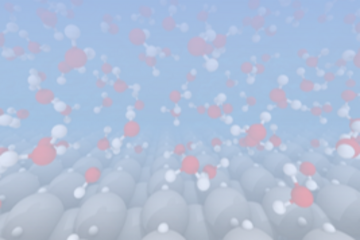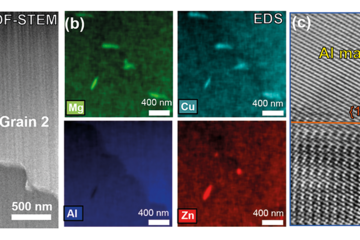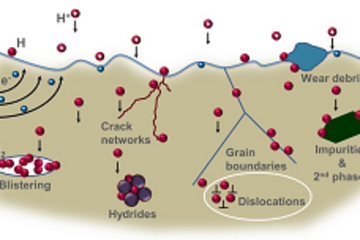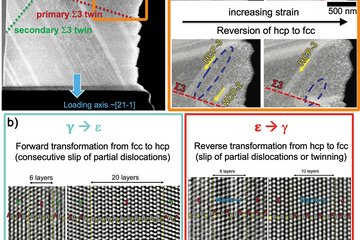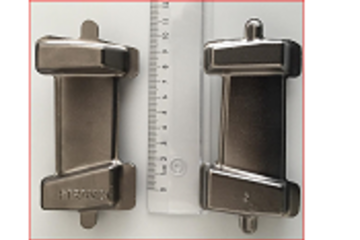All genres
21.
Journal Article
LiNbO3 ground- and excited-state properties from first-principles calculations. Physical Review B 77, 035106 (2008)
22.
Journal Article
Quantum conductance of In nanowires on Si(111) from first principles calculations. Surface Science 601 (18), pp. 4045 - 4047 (2007)
23.
Journal Article
Hexagon versus trimer formation in in nanowires on Si(111): Energetics and quantum conductance. Physical Review Letters 98 (2), 026105 (2007)
24.
Conference Paper
Si(111)-In Nanowire Optical Response from Large-scale Ab Initio Calculations. In: High Performance Computing in Science and Engineering 2010, pp. 149 - 158. 14th Annual Results and Review Workshop on High Performance Computing in Science and Engineering, Stuttgart University, Stuttgart, Germany, October 04, 2010 - October 05, 2010. Springer-Verlag Berlin, Berlin, Germany (2011)
25.
Conference Paper
Understanding Long-range Indirect Interactions Between Surface Adsorbed Molecules. In: High Performance Computing in Science and Engineering 2009, pp. 75 - 84. 12th Results and Review Workshop on High Performance Computing in
Science and Engineering, Stuttgart University , Stuttgart, Germany, October 08, 2009 - October 09, 2009. (2010)
26.
Conference Paper
Understanding Electron Transport in Atomic Nanowires from Large-Scale Numerical Calculations. In: High Performance Computing on Vector Systems 2009, pp. 233 - 242. 10th Teraflop Workshop, HLRS, Stuttgart, Germany, March 16, 2009 - March 17, 2009. (2010)
27.
Conference Paper
Optical anisotropy of Si(111)-( 4x1)/( 8x2)-In nanowires calculated from first-principles. In: Physica Status Solidi C, Vol. 7, pp. 133 - 136. 12th International Conference on Formation of Semiconductor Interfaces, Weimar, Germany, July 05, 2009 - July 10, 2009. Wiley-VCH, Weinheim (2010)
28.
Conference Paper
Dissociative and molecular adsorption of water on alpha-Al2O3(0001). In: Physica Status Solidi C, Vol. 7, pp. 137 - 140. 12th International Conference on Formation of Semiconductor Interfaces, Weimar, Germany, July 05, 2009 - July 10, 2009. Wiley-VCH, Weinheim (2010)
29.
Conference Paper
Anomalous water optical absorption: Large-scale first-principles simulations. In: High Performance Computing in Science and Engineering '06, pp. 49 - 58. 9th Results and Review Workshop on High Performance Computing in Science and Engineering, Stuttgart University, Stuttgart, Germany, October 19, 2006 - October 20, 2006. (2007)
30.
Talk
Impurity-mediated early condensation of an atomic layer electronic crystal: oxygen-adsorbed In/Si(111)-(4×1)/(8×2). DPG Spring Meeting 2015, Berlin, Germany (2015)
31.
Talk
In/Si(111)-(4×1)/(8×2): a fascinating model system for one-dimensional conductors. DPG March Meeting 2014, Berlin, Germany (2014)
32.
Talk
In/Si(111)-(4x1)/(8x2): A fascinating model system for one-dimensional conductors. DPG Spring Meeting, Dresden, Germany (2014)
33.
Talk
Large-scale numerical calculations for understanding the properties of materials. 9th Teraflop Workshop, Sendai, Japan (2008)
34.
Poster
Understanding 3C-SiC/SiO2 interfaces in SiC-nanofiber based solar cells from ab initio theory. PSI-K 2015 Conference , San Sebastian, Spain (2015)
35.
Poster
Oxygen adsorbed In/Si(111)-(4x1)/(8x2): surface transport and and impurity-mediated early condensation of an atomic layer electronic crystal. PSI-K 2015 Conference , San Sebastian, Spain (2015)
36.
Poster
Oxygen adsorption on the In/Si(111) nanowire array: structure and influence on metal insulator transition. DPG Spring Meeting, Dresden, Germany (2014)
37.
Thesis - PhD
Interstitial solution enthalpies derived from rst-principles: Knowledge Discovery using High-Throughput Databases. Dissertation, Universität Paderborn, Fakultät für Naturwissenschaften, Paderborn, Germany (2016)




